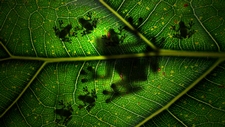Amphibian Life Cycles
Supporting

TEKS Objective
The student is expected to investigate and compare how animals and plants undergo a series of orderly changes in their diverse life cycles such as tomato plants, frogs, and ladybugs.
Essential Understanding
The student knows that organisms undergo similar life processes and have structures that help them survive within their environments.
Science Background
Animals - Amphibians: San Diego Zoo (website) - Learn about the key characteristics of amphibians, such as their life cycle, habitats, etc. Includes links to specific information about several amphibians.
Animals - Amphibians
San Diego Zoo, www.sandiegozoo.org
Frog: Wikipedia (website) - Scroll halfway down the page for detailed information about a frog’s life cycle. The site also includes photos, illustrations and descriptions of frog physiology, evolution and more.
Signature Lesson
An Integrated Lesson Comparing the Butterfly and Frog Life Cycles: Learn NC (website) - In this three-day activity, students investigate and compare/contrast the similarities and differences in changes that occur during life cycles of butterflies and frogs. Integrates science, mathematics and language arts, and includes assessment and supplemental information.
An Integrated Lesson Comparing the Butterfly and Frog Life Cycles
Learn NC, www.learnnc.org
- Supporting Lessons
- Extensions
- Assessment Ideas
- Literature Connections
- Related
TEKS - Additional Resources
Supporting Lessons
Leap into the Life Cycle of a Frog: Alabama Learning Exchange (website) - Students observe frogs from tadpoles in the classroom, observe the animals’ changes and development, document/describe each stage of the life cycle, and compare a frog’s life cycle to that of other animals.
Leap into the Life Cycle of a Frog
Alabama Learning Exchange, alex.state.al.us
Elaboration Lessons and Extensions
Life Cycles and Insects: National Core Knowledge Coordinator of Colorado (PDF) - This unit focuses on investigation of insect life cycles, and compares them to the life cycles of other amphibians, plants and birds. Includes student pages.
Life Cycles and Insects
National Core Knowledge Coordinator of Colorado, www.ckcolorado.org
Assessment Ideas
Have students create an illustrated booklet describing care of tadpoles and the life cycle of a frog.
Literature Connections
Amphibian. Clarke, Barry (ISBN-13: 978-0756613808)
What is an Amphibian? Kalman, Bobbie (ISBN-13: 978-0865059344)
Toad by the Road. Ryder, Joanne (ISBN-13: 978-0805073546)
About Amphibians: A Guide for Children. Sill, Cathryn (ISBN-13: 978-1561453122)
Amphibians. Stewart, Melissa (ISBN-13: 978-0516259505)
Additional Resources
Life Cycle of a Frog/Toad: Virtual Teacher Aide (website) - Interactive activity that reinforces students’ understanding of frog life cycles.
Life Cycle of a Frog/Toad
Virtual Teacher Aide, www.vtaide.com
Frog Activities: Kidszone (website) - Downloadable student sheet covering the frog life cycle.
Frog Activities
Kidszone, www.kidzone.ws
Life Cycle Flip Books: Exploring Nature (website) - Students create a flip book that illustrates the growth and changes undergone by a plant or animal as it moves through it life cycle.
Life Cycle Flip Books
Exploring Nature, www.exploringnature.org
TEKS Navigation
Grade 3
Need Assistance?
If you need help or have a question please use the links below to help resolve your problem.

Comments